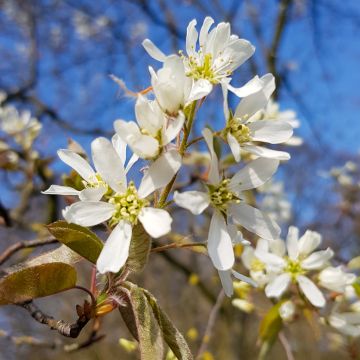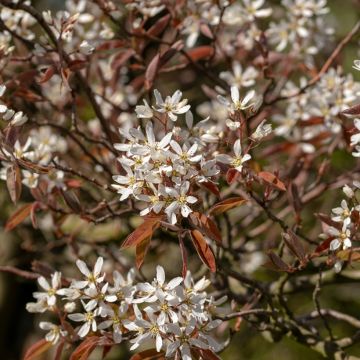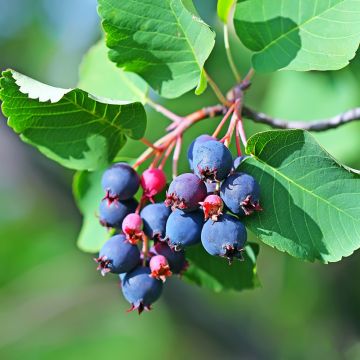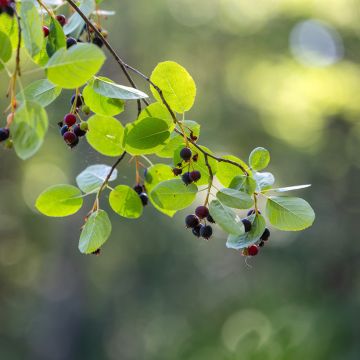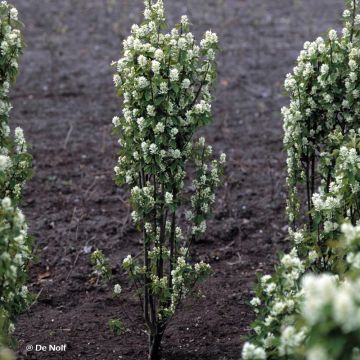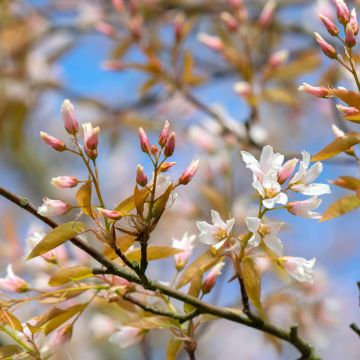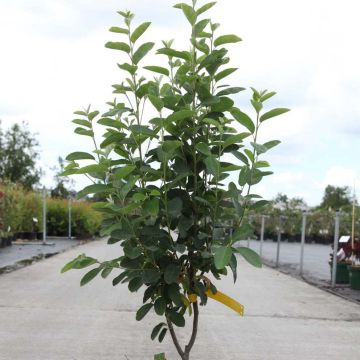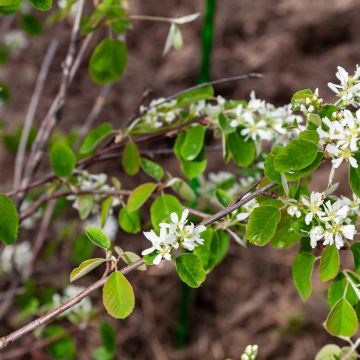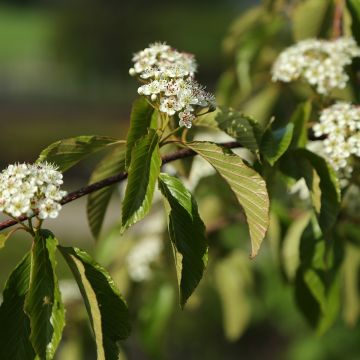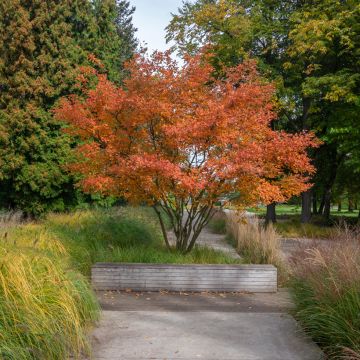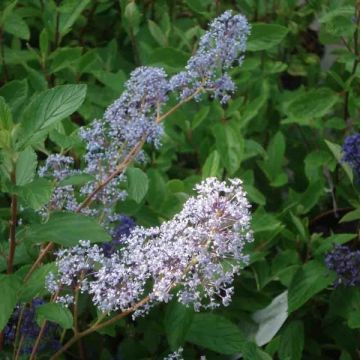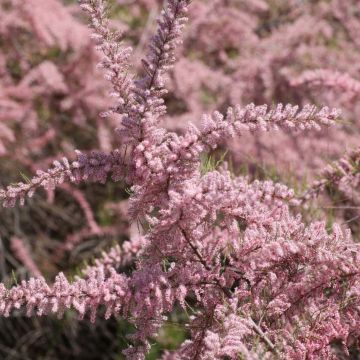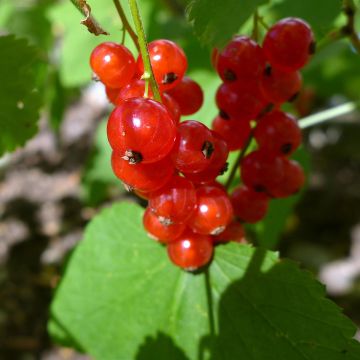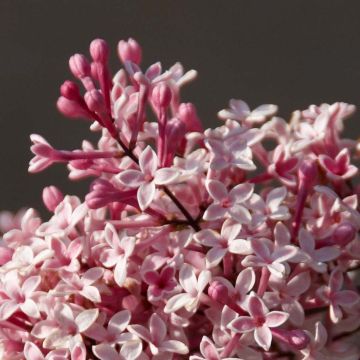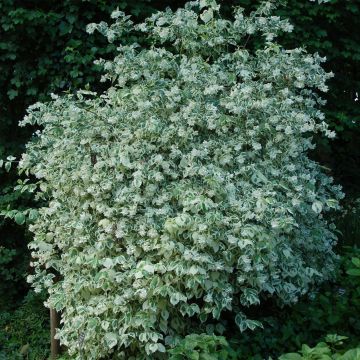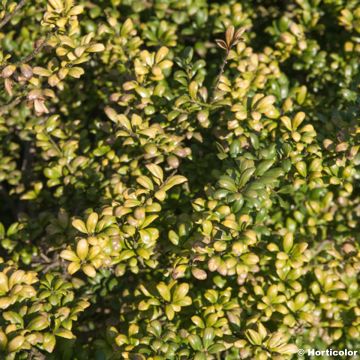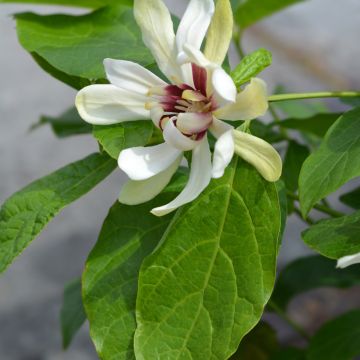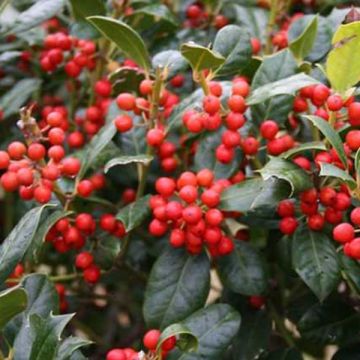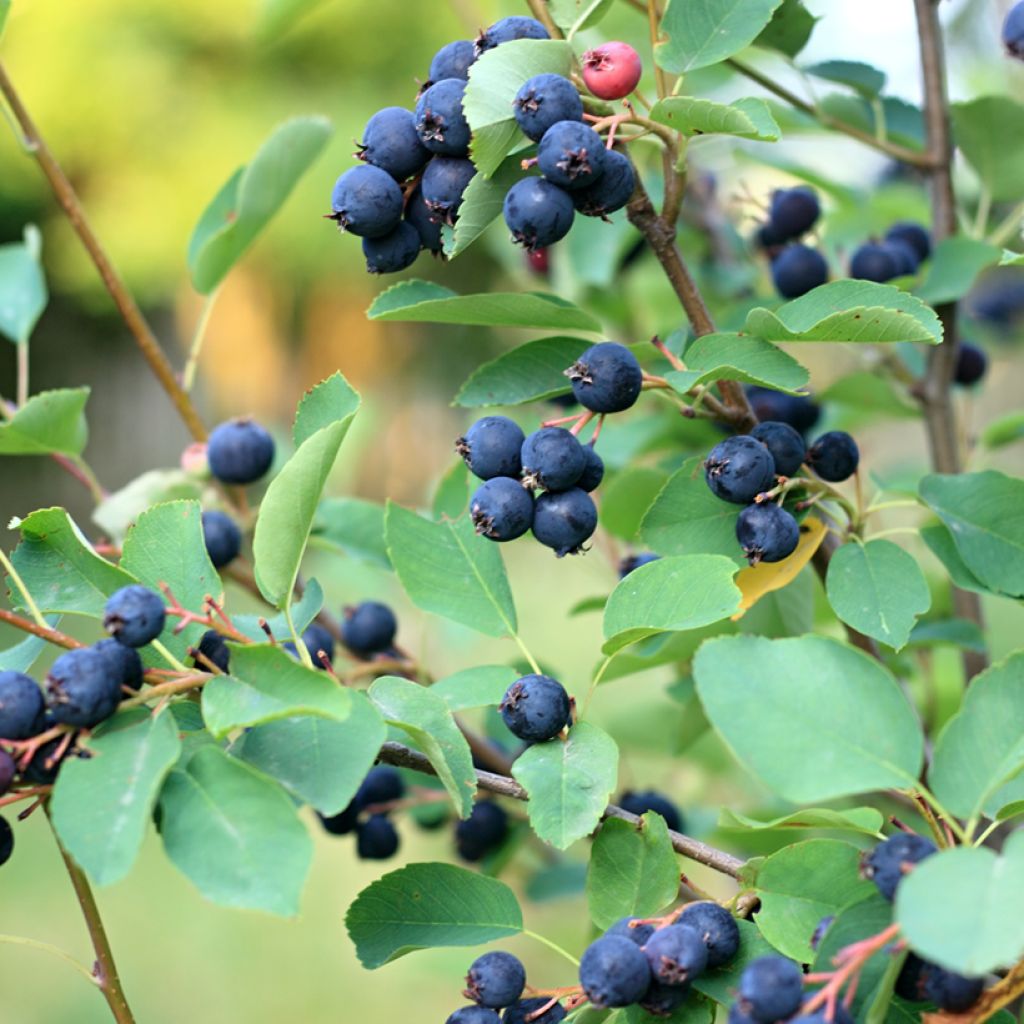

Amelanchier alnifolia Smoky
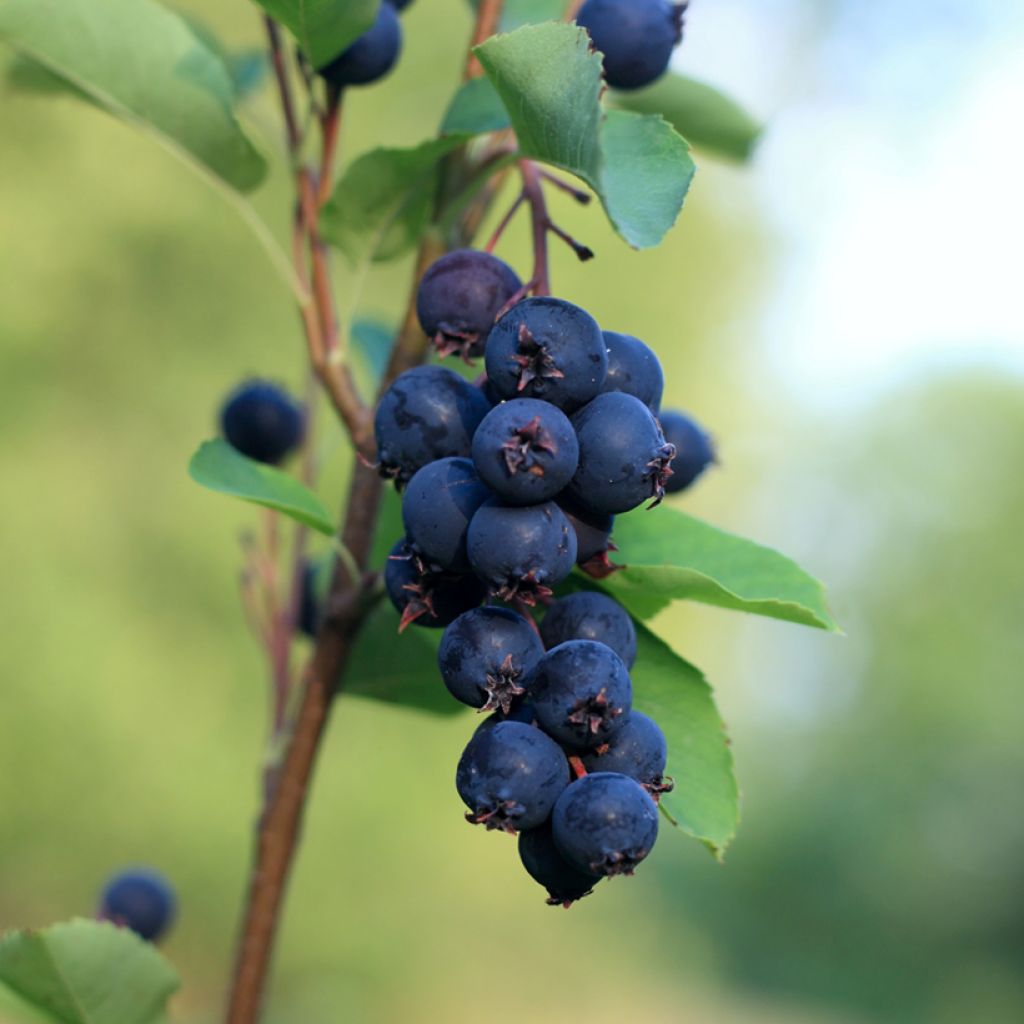

Amelanchier alnifolia Smoky
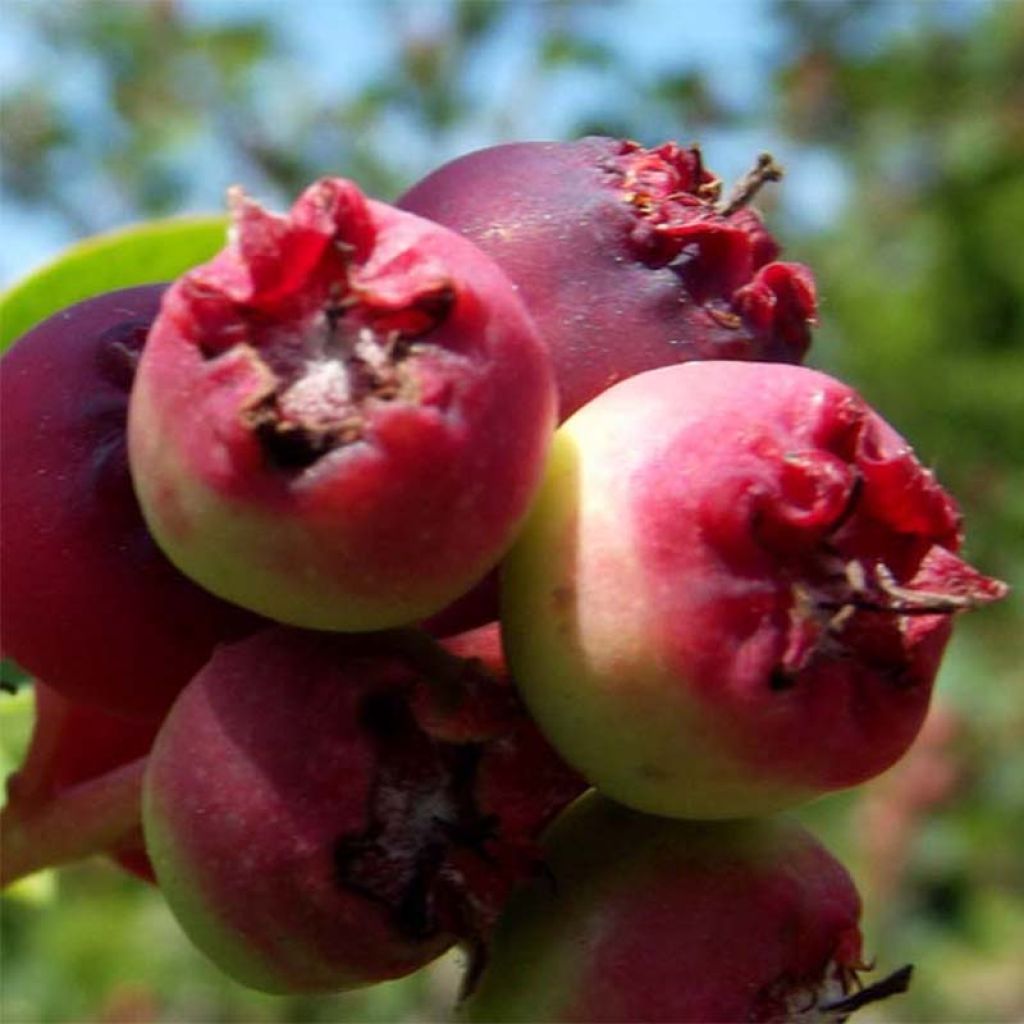

Amelanchier alnifolia Smoky
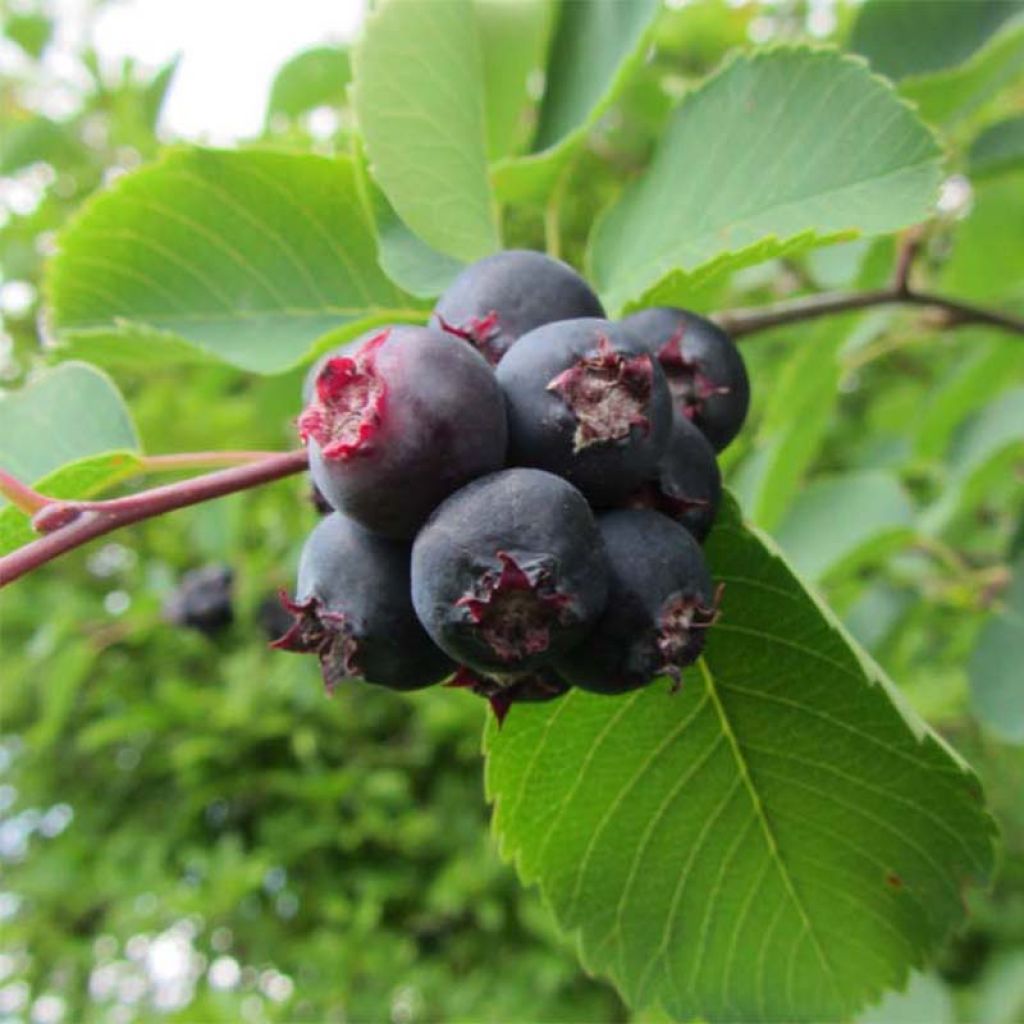

Amelanchier alnifolia Smoky
Amelanchier alnifolia Smoky
Amelanchier alnifolia Smoky
Saskatoon, Western Serviceberry, Pacific Serviceberry, Alder-leaf Shadbush, Dwarf Shadbush, Chuckley Pear, Western Juneberry
Why not try an alternative variety in stock?
View all →This plant carries a 24 months recovery warranty
More information
We guarantee the quality of our plants for a full growing cycle, and will replace at our expense any plant that fails to recover under normal climatic and planting conditions.
From €5.90 for pickup delivery and €6.90 for home delivery
Express home delivery from €8.90.
Does this plant fit my garden?
Set up your Plantfit profile →
Description
Amelanchier 'Smoky' (sometimes spelled Smokey) is a selection of alder-leaved shadbush with particularly tasty fruits and good productivity. Its medium-sized berries contain a very sweet, flavourful flesh that combines the taste of apple and blueberry. Sweet and delicious, they can be eaten fresh, juiced, and to make delicious pastries, jellies, and vitamin-rich jams. An excellent alternative to the blueberry bush in ordinary soil, this American fruit bush also offers delightful white flowers in spring and beautiful autumn colours. It deserves to be planted more in our gardens.
Native to North America, Amelanchier alnifolia is a sturdy bush of the large Rosaceae family, spared by most pests and resistant to extreme cold. In nature, it can be found along riverbeds as well as in much less favourable environments, such as rocky slopes exposed to the wind. It is a plant that prefers slightly acidic to neutral, loamy and moist soil, and it proves to be very adaptable to relatively dry and hot summers once established. This Amelanchier alnifolia species is one of the few in the genus that can tolerate reasonably calcareous soils. To obtain a good harvest, it is advisable to provide it with fairly fertile soil and water as needed.
The 'Smoky' cultivar, discovered in the wild in Canada at the beginning of the 20th century, was selected for its productivity and the taste of its fruits. It has a bushy habit, rather upright. With relatively slow growth, the bush will reach an average height of 2.75 m (9 ft) and a spread of 2.25 m (7 ft 5 in) at maturity. Flowering is abundant in April-May, at the tips of bare young branches or those already covered with young leaves, depending on the climate. Flowering and fruiting is rapid in this shadbush. The 2 cm (0.8 in) diameter white flowers with 5 petals and yellow stamens are grouped in clusters along the branches. They are followed by edible fruits the size of a blueberry, globose, known as pomes, carried in pendant clusters. The ripening of the fruits takes slightly longer than in other varieties, allowing for a staggered harvest over a month, starting from the end of June in an average climate. The 1.4 cm (0.6 in) diameter berries are initially dark pink and then become blue-black when ripe. They can be eaten fresh, cooked, or dried. Their shelf life is limited, but freezing and canning allows for reserves to be consumed during the winter. Recent analyses have confirmed their high content of antioxidant molecules, vitamins, and minerals. A single plant can yield up to 7-8 kg of fruit depending on the soil fertility.
The young spring leaves are reddish. They turn a lovely green-blue colour and then yellow or even orange in autumn before falling. Measuring up to 5 cm (2 in) in length, they are ovate, with serrated edges, and alternately arranged on the branches. This 'Smoky' variety resists powdery mildew well. While a single plant is sufficient to obtain a harvest of up to 7-8 kg of fruits, it is recommended to plant two of them for optimal fruiting.
The 'Smoky' Amelanchier is a fruit bush full of appealing qualities: sturdy, undemanding, and charming, it provides tasty and highly nutritious fruits. It is a mystery why it is still rare in our gardens. It definitely deserves a place in a country, free, or fruit hedge, even in a small-sized garden. It also works well as a background plant in perennial beds. It pairs perfectly with ornamental apple and cherry trees, deciduous spindle trees, Japanese quince Cido, spring spireas, hawthorns, medlars, prunus, and many others. Create a fruit hedge by combining it, for example, with the Myberry (Lonicera kamtschatica Sweet Myberry), garden blackberries, currants, gooseberries, cranberries (Vaccinium macrocarpon), raspberries, blackcurrants, Aronia, Japanese goumi, black elderberries, and more.
Report an error about the product description
Amelanchier alnifolia Smoky in pictures


Plant habit
Flowering
Foliage
Botanical data
Amelanchier
alnifolia
Smoky
Rosaceae
Saskatoon, Western Serviceberry, Pacific Serviceberry, Alder-leaf Shadbush, Dwarf Shadbush, Chuckley Pear, Western Juneberry
North America
Other Saskatoon - Juneberry
Planting and care
Smoky Amelanchier is planted in spring or autumn in any good, well-drained garden soil, moist or slightly moist, deep, in a sunny or partially shaded position. It prefers slightly acidic to neutral, loamy or humus-rich soils, but tolerates some limestone (pH < 7.5). Water and mulch help to maintain soil moisture. This bush, which does not like overly arid conditions, can however withstand moderate summer droughts once well established. Water regularly to help it establish, especially during the first two dry summers. Mulch the soil to maintain some moisture, always after thoroughly watering your Amelanchier so that its roots do not develop only at the surface, which would make it more susceptible to drying out.
Apply well-rotted compost at the base of your bush every spring.
You can prune the bush from the first year to encourage branching. Remove the oldest branches that have already fruited, as well as dead or weak shoots. Be careful of powdery mildew! Spray a sulfur-based fungicide as a preventive measure if the spring is mild and very humid.
Planting period
Intended location
Care
-
, onOrder confirmed
Reply from on Promesse de fleurs
Hedge shrubs
Haven't found what you were looking for?
Hardiness is the lowest winter temperature a plant can endure without suffering serious damage or even dying. However, hardiness is affected by location (a sheltered area, such as a patio), protection (winter cover) and soil type (hardiness is improved by well-drained soil).

Photo Sharing Terms & Conditions
In order to encourage gardeners to interact and share their experiences, Promesse de fleurs offers various media enabling content to be uploaded onto its Site - in particular via the ‘Photo sharing’ module.
The User agrees to refrain from:
- Posting any content that is illegal, prejudicial, insulting, racist, inciteful to hatred, revisionist, contrary to public decency, that infringes on privacy or on the privacy rights of third parties, in particular the publicity rights of persons and goods, intellectual property rights, or the right to privacy.
- Submitting content on behalf of a third party;
- Impersonate the identity of a third party and/or publish any personal information about a third party;
In general, the User undertakes to refrain from any unethical behaviour.
All Content (in particular text, comments, files, images, photos, videos, creative works, etc.), which may be subject to property or intellectual property rights, image or other private rights, shall remain the property of the User, subject to the limited rights granted by the terms of the licence granted by Promesse de fleurs as stated below. Users are at liberty to publish or not to publish such Content on the Site, notably via the ‘Photo Sharing’ facility, and accept that this Content shall be made public and freely accessible, notably on the Internet.
Users further acknowledge, undertake to have ,and guarantee that they hold all necessary rights and permissions to publish such material on the Site, in particular with regard to the legislation in force pertaining to any privacy, property, intellectual property, image, or contractual rights, or rights of any other nature. By publishing such Content on the Site, Users acknowledge accepting full liability as publishers of the Content within the meaning of the law, and grant Promesse de fleurs, free of charge, an inclusive, worldwide licence for the said Content for the entire duration of its publication, including all reproduction, representation, up/downloading, displaying, performing, transmission, and storage rights.
Users also grant permission for their name to be linked to the Content and accept that this link may not always be made available.
By engaging in posting material, Users consent to their Content becoming automatically accessible on the Internet, in particular on other sites and/or blogs and/or web pages of the Promesse de fleurs site, including in particular social pages and the Promesse de fleurs catalogue.
Users may secure the removal of entrusted content free of charge by issuing a simple request via our contact form.
The flowering period indicated on our website applies to countries and regions located in USDA zone 8 (France, the United Kingdom, Ireland, the Netherlands, etc.)
It will vary according to where you live:
- In zones 9 to 10 (Italy, Spain, Greece, etc.), flowering will occur about 2 to 4 weeks earlier.
- In zones 6 to 7 (Germany, Poland, Slovenia, and lower mountainous regions), flowering will be delayed by 2 to 3 weeks.
- In zone 5 (Central Europe, Scandinavia), blooming will be delayed by 3 to 5 weeks.
In temperate climates, pruning of spring-flowering shrubs (forsythia, spireas, etc.) should be done just after flowering.
Pruning of summer-flowering shrubs (Indian Lilac, Perovskia, etc.) can be done in winter or spring.
In cold regions as well as with frost-sensitive plants, avoid pruning too early when severe frosts may still occur.
The planting period indicated on our website applies to countries and regions located in USDA zone 8 (France, United Kingdom, Ireland, Netherlands).
It will vary according to where you live:
- In Mediterranean zones (Marseille, Madrid, Milan, etc.), autumn and winter are the best planting periods.
- In continental zones (Strasbourg, Munich, Vienna, etc.), delay planting by 2 to 3 weeks in spring and bring it forward by 2 to 4 weeks in autumn.
- In mountainous regions (the Alps, Pyrenees, Carpathians, etc.), it is best to plant in late spring (May-June) or late summer (August-September).
The harvesting period indicated on our website applies to countries and regions in USDA zone 8 (France, England, Ireland, the Netherlands).
In colder areas (Scandinavia, Poland, Austria...) fruit and vegetable harvests are likely to be delayed by 3-4 weeks.
In warmer areas (Italy, Spain, Greece, etc.), harvesting will probably take place earlier, depending on weather conditions.
The sowing periods indicated on our website apply to countries and regions within USDA Zone 8 (France, UK, Ireland, Netherlands).
In colder areas (Scandinavia, Poland, Austria...), delay any outdoor sowing by 3-4 weeks, or sow under glass.
In warmer climes (Italy, Spain, Greece, etc.), bring outdoor sowing forward by a few weeks.

































